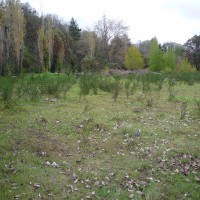
We have micro-macro ecosystems that contain new forms of geological evidences:
“Future Fossils: Plastic Stone”
…researchers have discovered an unexpected way that some plastic waste is persisting: as a new type of stone.
The substance, called plastiglomerate, is a fusion of natural and manufactured materials. Melted plastic binds together sand, shells, pebbles, basalt, coral and wood, or seeps into the cavities of larger rocks to form a rock-plastic hybrid. The resulting materials,researchers report in the journal GSA Today, will probably be long-lived and could even become permanent markers in the planet’s geologic record.
“Most conventional plastic is relatively thin and fragments quickly,” said Richard Thompson, a marine biologist at Plymouth University in England, who was not involved in the research. “But what’s being described here is something that’s going to be even more resistant to the aging process.”
Plastiglomerate was discovered in 2006 by Charles Moore, a sea captain and oceanographer at the Algalita Marine Research Institute in Long Beach, Calif. Mr. Moore was surveying plastic washed up on Kamilo Beach, a remote, polluted stretch of sand on Hawaii’s Big Island.
Patricia Corcoran’s been working on this – see “An Anthropogenic Marker Horizon in the Future Rock Record.” As a result of her research in Kamilo Beach, HA, she writes
We use the term plastiglomerate to describe an indurated, multi-composite material made hard by agglutination of rock and molten plastic. This material is subdivided into an in situ type, in which plastic is adhered to rock outcrops, and a clastic type, in which combinations of basalt, coral, shells, and local woody debris are cemented with grains of sand in a plastic matrix (Figs. 2A and 2B). Of the 21 sample locations containing plastiglomerate on Kamilo Beach, in situ plastiglomerate was identified at nine. Partially melted polymers adhered to basalt outcrops included fishing nets, piping, bottle caps, and rubber tires. Locally, molten plastic had infilled vesicles in volcanic rock, thereby forming plastic amygdales.




